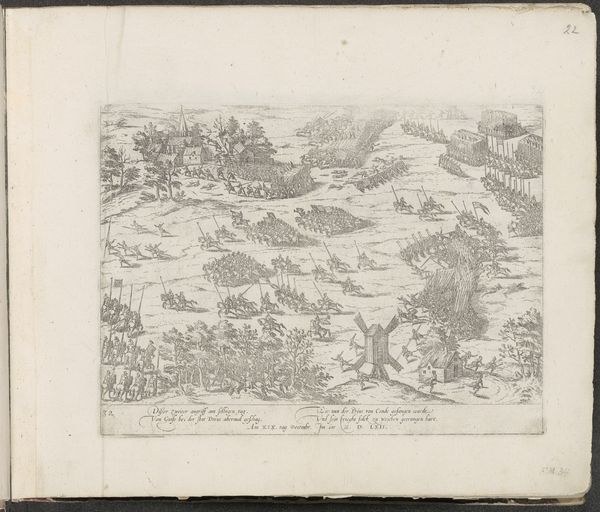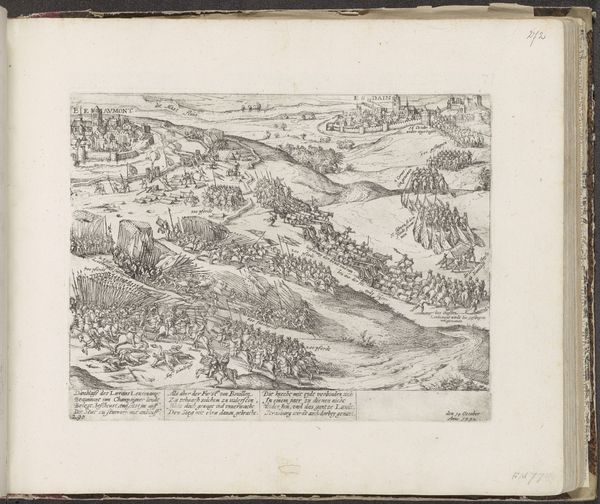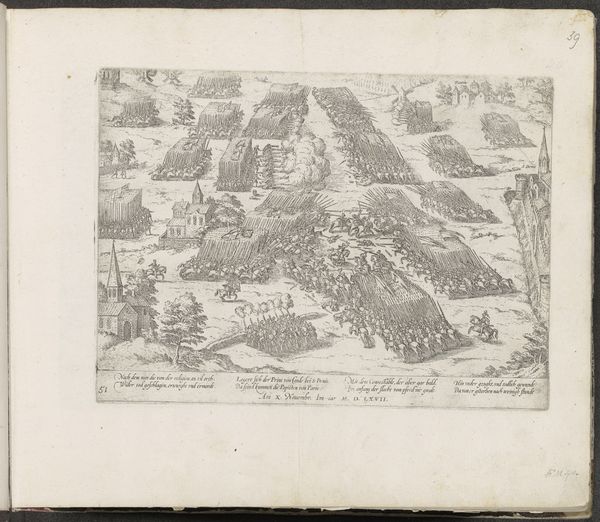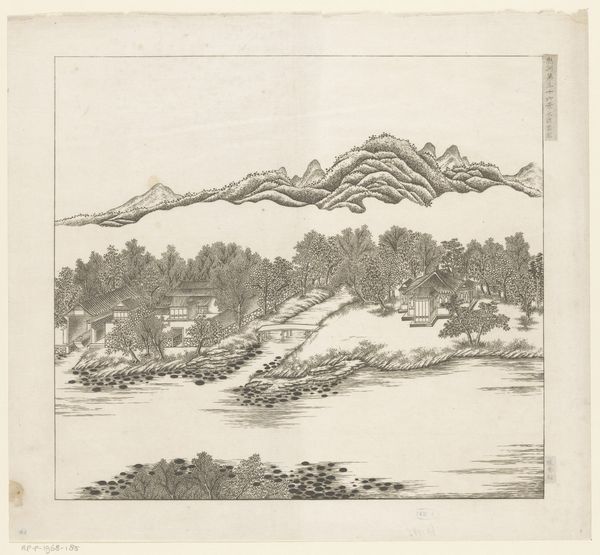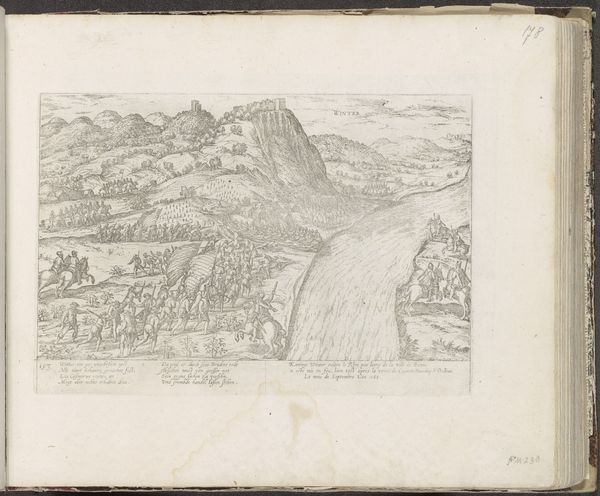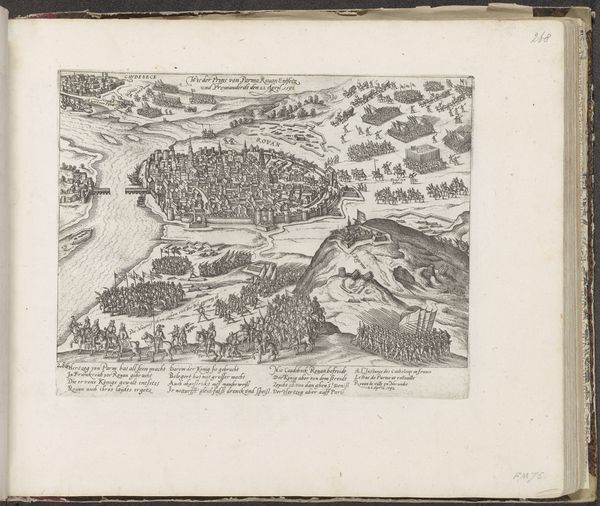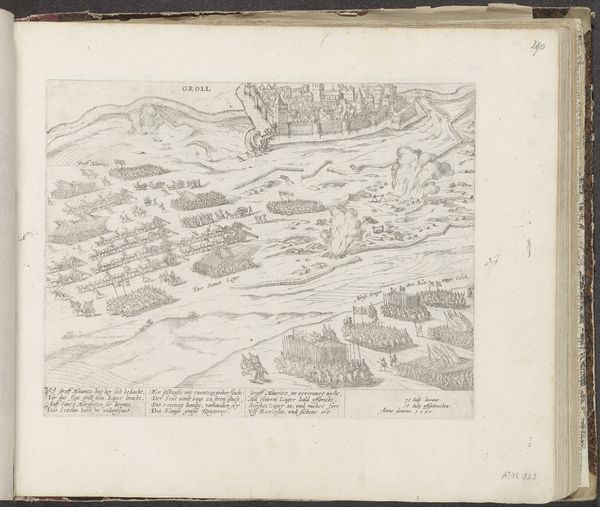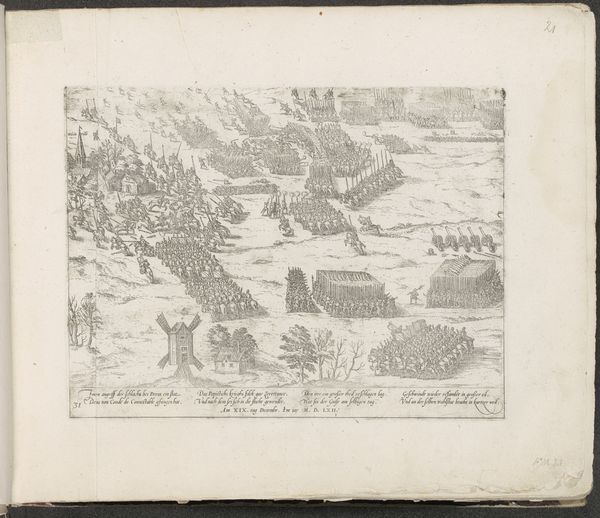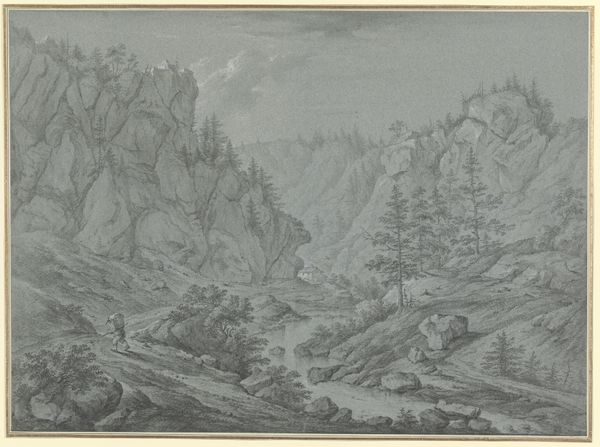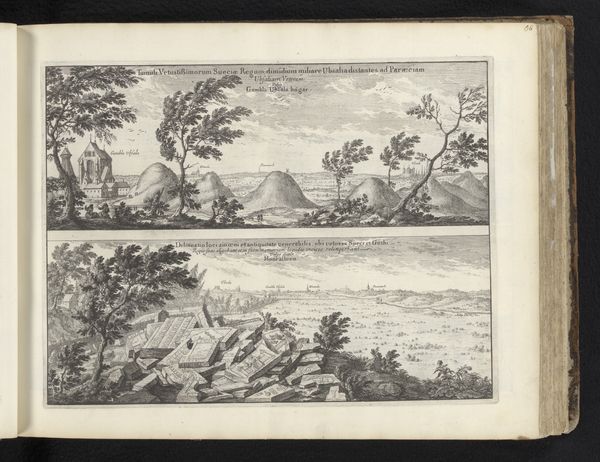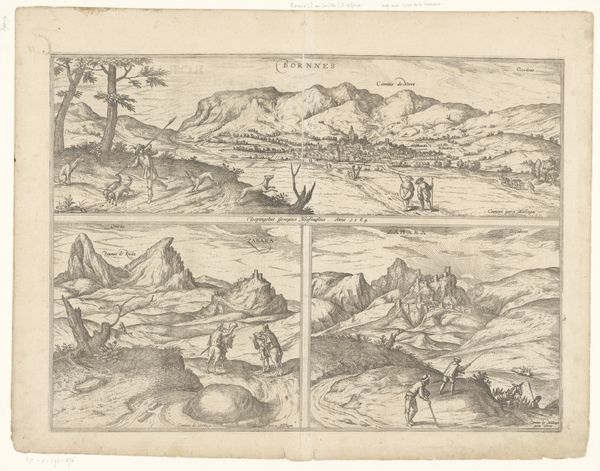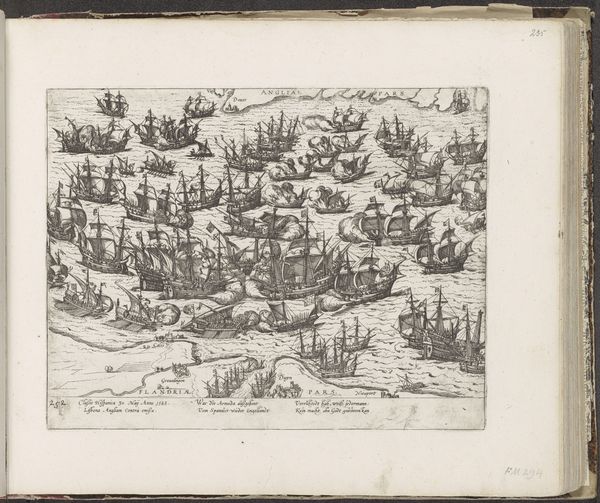
Gezicht op de ruïnes van slot Almarestäkets en het bisschopshuis Arnö 1670 - 1674
0:00
0:00
adamperelle
Rijksmuseum
print, engraving
#
baroque
# print
#
landscape
#
engraving
Dimensions: height 275 mm, width 349 mm
Copyright: Rijks Museum: Open Domain
Editor: So, this is "Gezicht op de ruïnes van slot Almarestäkets en het bisschopshuis Arnö" by Adam Perelle, made sometime between 1670 and 1674. It's an engraving, housed in the Rijksmuseum. I find the contrast between the ruins above and the building below so striking. What's your take on this piece? Curator: Looking at Perelle's engraving through a materialist lens, I am drawn to the physical process and societal implications of printmaking at the time. Consider the labor involved. The engraver, presumably working under Perelle's direction, meticulously carved lines into a metal plate. That labor reflects the growing print industry, catering to a demand for accessible imagery among a burgeoning middle class. Note also that the engraving facilitates distribution beyond a geographically limited audience. Editor: That makes sense! How does the *process* shape our understanding of the images themselves? Curator: Think about the constraints and possibilities of engraving. It is a medium rooted in mass production. Multiple prints were struck to reach a wider demographic. Look closer - how does the print technology democratize these landscapes? And what are the commercial elements, like how prints might drive travel, commissioning art, things like that? Editor: I see what you mean. These prints would’ve circulated widely, shaping perceptions of these locations far beyond the local community. It's no longer just about artistry. The materiality reveals layers about its moment in time. Curator: Precisely. Considering art's connection to broader culture and accessibility lets us see it on very different levels. Editor: Thanks, I’ve got much more to think about regarding engravings.
Comments
No comments
Be the first to comment and join the conversation on the ultimate creative platform.
